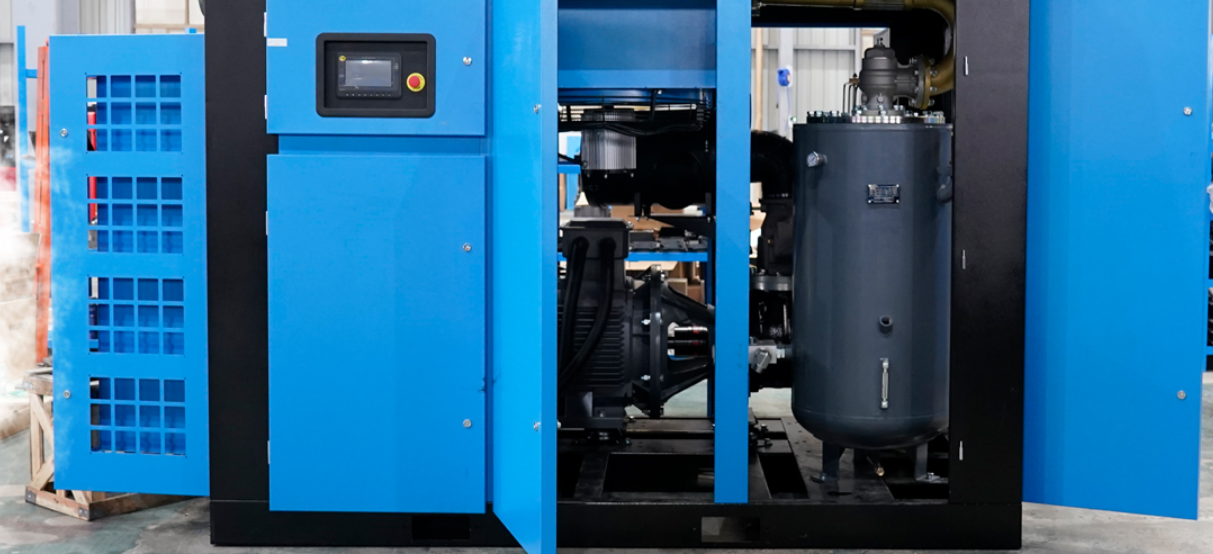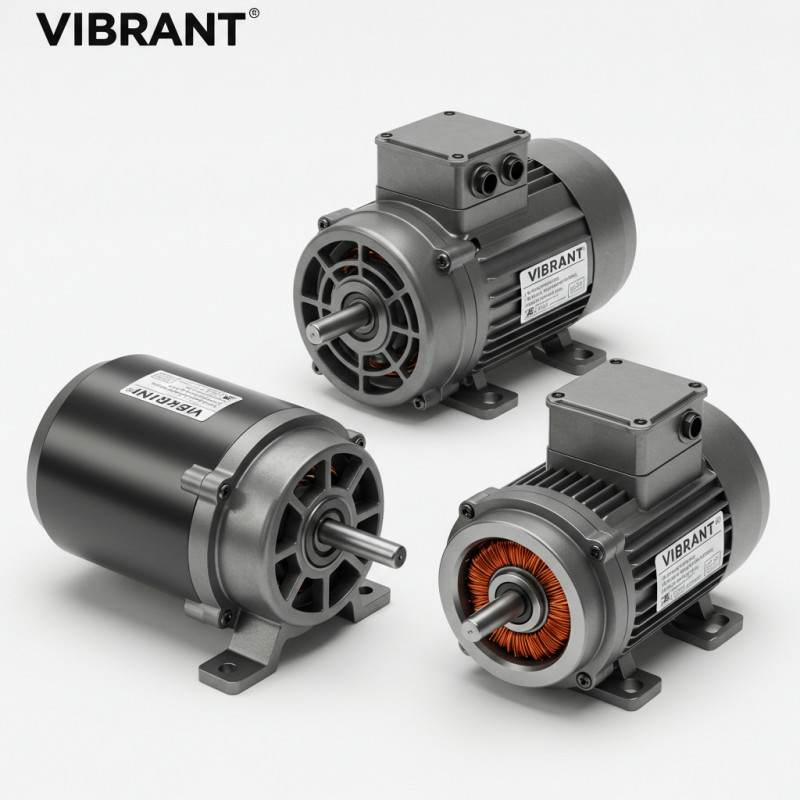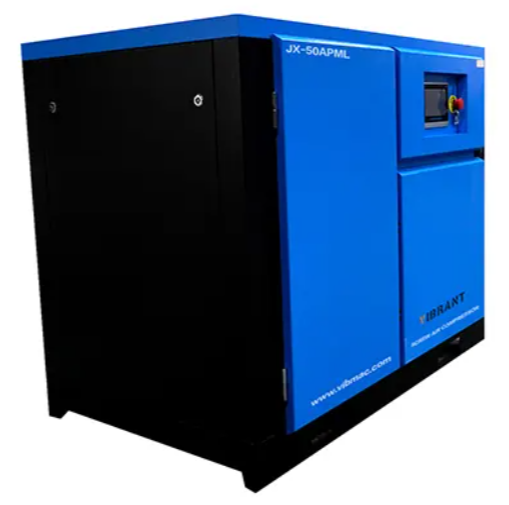Overview of CFM
What is CFM in air compressor and how to calculate it? CFM stands for Cubic Feet per Minute, which measures how much air the machine can move and shows whether it can keep your tools running. If you’re a pro mechanic, a committed painter, or just a weekend DIYer slowly collecting air-hungry gadgets, the right CFM tells you whether the compressor you are eyeing has enough muscle for the job.
It measures the volume of compressed air the unit delivers every minute, usually stated at a set pressure, often in PSI (Pounds per Square Inch). In plain terms, the CFM number tells you how much airflow your compressor can push out to keep your tools fed and working steadily.
Choose a Compressor with a Higher CFM
CFM, or cubic feet per minute, tells you how much air the compressor can deliver every minute. For tools that need a steady river of air-paint sprayers, sandblasters, or body-shop impact, the CFM number is everything. A tiny nail gun sips only about 2 CFM, but a full-sized blaster can gulp 15 CFM or even more. Because of these differences, the compressor’s CFM rating must match the tool’s requirements. Go below that number and the tool sputters, slows down, or quits work altogether. Choose a compressor with a higher CFM, and you gain the freedom to run several air tools at once without dragging out a second machine. Whether you fix cars for a living or just repaint your front porch, knowing what CFM means keeps your projects moving and saves you headaches.
Why is CFM Critical for Air Tools?
Every air tool you pick-paint sprayer, tire gun, or sand blaster has its own CFM hunger. If your compressor can’t keep up, performance drops, parts overheat, and sometimes the tool simply shuts down. Common CFM figures for popular jobs include:
- Paint sprayer: 4-8 CFM
- Impact wrench: 5-10 CFM
- Sandblaster: 10-20+ CFM
Grasping these numbers lets you pair the right compressor with your kit and work confidently.
Air Compressor CFM Vs PSI: What’s the Difference?
Many people get CFM and PSI tangled. CFM tells you how much air moves, while PSI (Pounds per Square Inch) shows the pressure pushing that air out. Force and volume.
– PSI = Force
– CFM = Volume
Both numbers have to line up. An air ratchet might run best at 90 PSI and 5 CFM.

SCFM Vs ACFM Vs CFM: Understanding the Variants
Now it gets a bit technical:
SCFM: Standard Cubic Feet per Minute, measured at 68°F, 14.7 psi, and 36 percent humidity.
ACFM: Actual Cubic Feet per Minute, recorded at the conditions in your shop.
ICFM: Inlet CFM, the volume of air hitting the compressor before any change happens.
-FAD: Free Air Delivery, the usable air you get after the pump compresses it.
How to Calculate Air Compressor CFM: Step-By-Step
Knowing how to work out CFM helps you judge a compressor’s real muscle. The pump-up method gives a simple, honest estimate, so let’s walk through it.
1. Drain the tank completely so it starts from zero PSI.
2. Run the compressor and clock the seconds it takes to push the tank from 0 PSI to the maximum pressure.
3. Plug the numbers into this formula to get CFM:
CFM = (Tank Volume in Gallons × 7.48) ÷ (Pump-Up Time in Seconds ÷ 60)
Example:
With a 30-gallon tank that fills in 60 seconds, you do:
CFM = (30 × 7.48) ÷ (60 ÷ 60) = 224.4 CFM
Keep in mind that an ideal figure. Real-world CFM drops thanks to leaks, heat buildup, and small hardware losses. By measuring the true output, you can choose a compressor that keeps pace with your tools and projects.
Air Compressor HP and CFM: The Connection
Horsepower (HP) shows motor strength, yet extra HP doesn’t always boost CFM. Here is a rough guide:
– 1 HP ~= 3-4 CFM at 90 PSI
– 5 HP ~= 15-20 CFM at 90 PSI
Compressor design, cooling, and the pressure you set matter just as much.
– Compressor horsepower and CFM
– HP-to-CFM cross-reference chart
Altitude and Temperature: Their Effect on CFM
Thin air at high altitudes pushes less mass through the cylinder with each stroke, dropping CFM. Hot air is lighter and holds less oxygen, curtailing performance in much the same way.
High-altitude operation = lower CFM
High-temperature operation = lower CFM
How to Size Your Air Compressor Based on CFM
1. Pinpoint the tool with the highest CFM rating.
2. Multiply that number by 1.5 for a safety cushion.
3. Check that your compressor’s CFM at 90 PSI comfortably exceeds it.
How to Increase Compressor CFM?
If your compressor runs dry under heavy use, several easy tweaks can pump up its useful CFM. First, link a second compressor in parallel; two units working together send out roughly double the air. This trick suits shops that already have a standby machine collecting dust. Second, swap in a bigger storage tank so you hold more air during brief peak bursts. Third, drop the working pressure union. Many tools need less PSI than we imagine. When you lower the pressure, the pump fills the tank more steadily. You can then tweak individual tools with a separate regulator. Finally, tidy the delivery lines: cut long hoses and dodge tight bends that throttle flow. These low-cost fixes boost airflow without forcing you to buy a whole new compressor. If shortages keep cropping up, move up to a larger CFM machine that matches your air tool roster.
Conclusion
What is CFM in air compressor and how to calculate it? Boost it- keeps every nail gun, paint sprayer, and grinder working as hard as you do. On the shop floor or the job site, CFM remains your chief number. Lean on our tips, quick charts, and handy tools so you can buy wisely and stay productive. Craving extra know-how? Drop by VIBRANT Compressors for pro insights, product manuals, and friendly tech help.









